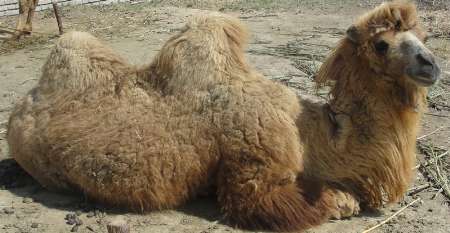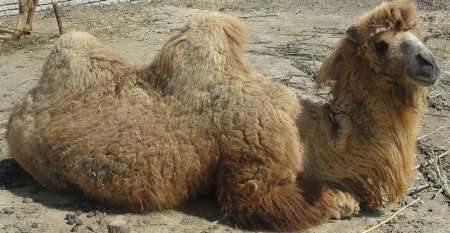 Ardebil, Dec 16, IRNA � The rare Iranian camel known as the Bactrian (two-humped) camel had become extinct in many parts of the country and this rare species has also become endangered in the Northwestern Ardebil province where a large population of the rare species lives.
Ardebil, Dec 16, IRNA � The rare Iranian camel known as the Bactrian (two-humped) camel had become extinct in many parts of the country and this rare species has also become endangered in the Northwestern Ardebil province where a large population of the rare species lives.��The Iranian Bactrian camel (Camelus bactrianus) weighs between 750 to 850 kilograms. The milk of the Bactrian camel is rich in vitamin C.
The Bactrian camels can tolerate temperatures between -30 to +30 degrees.
The Bactrian camel is a large, even-toed ungulate native to the steppes of Central Asia before they migrated to Iran. Of the two species of camel, it is by far the rarer.
The Bactrian camel has two humps on its back, in contrast to the single-humped dromedary camel.
Its population of two million exists mainly in the domesticated form.
Some authorities, notably the International Union for Conservation of Nature (IUCN), use the binomial name Camelus ferus for the wild Bactrian camel and reserve Camelus bactrianus for the domesticated Bactrian camel. Their name comes from the ancient historical region of Bactria.
The domesticated Bactrian camel has served as a pack animal in inner Asia since ancient times.
With its tolerance for cold, drought, and high altitudes, the animal has in the course of history enabled travel such as the trips of caravans of the ancient Silk Road.
The wild form has dwindled to a population estimated at 800 in October 2002 and has been classified as critically endangered on the IUCN Red List of Threatened Species.
Its range in the wild is restricted to remote regions of the Gobi and Taklamakan Deserts of Mongolia and China, migrating from the desert to rivers in Siberia during winter.
A small number of wild Bactrian camels still roam the Mangystau Province of southwest Kazakhstan and the Kashmir valley in India. There are feral herds of Bactrian camels in Australia.
By IRNA
The Iran Project is not responsible for the content of quoted articles.











